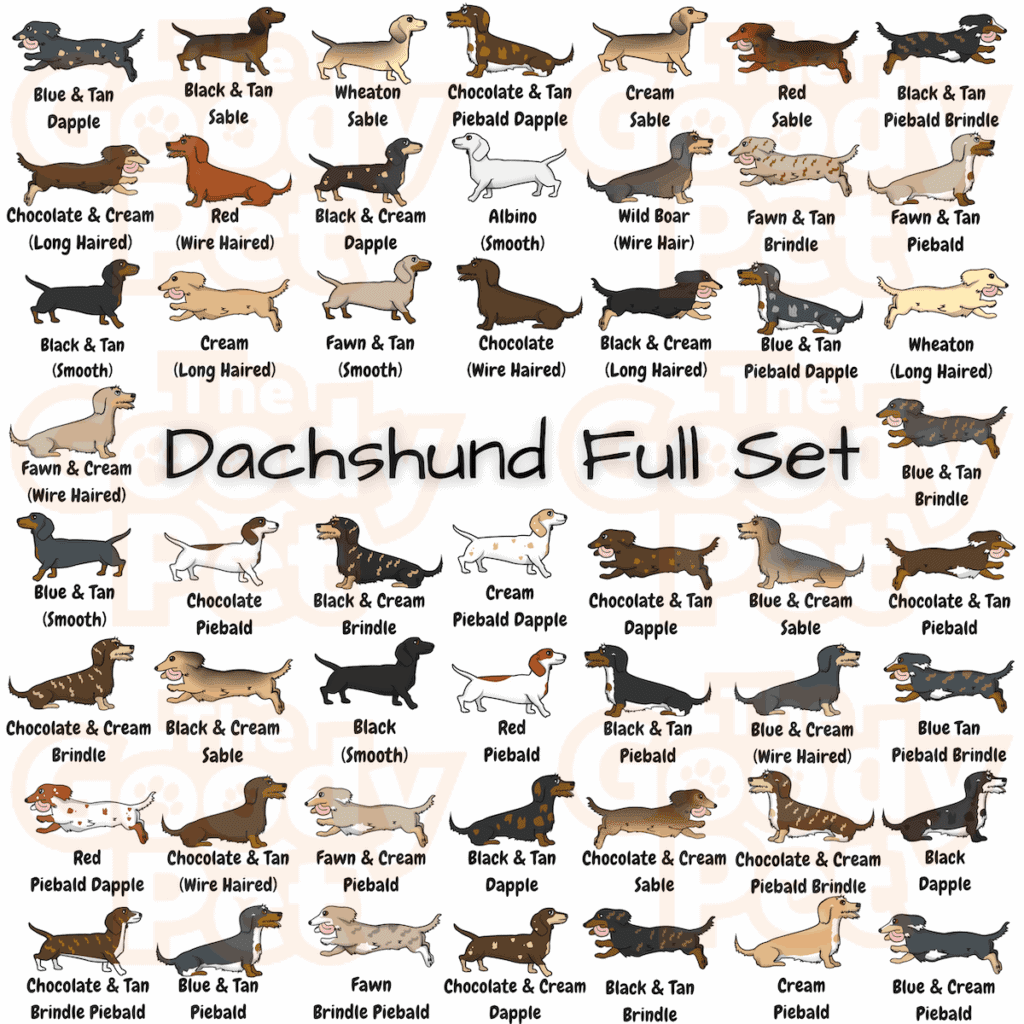Dachshunds are easily one of my favorite doggies of all breeds. They are considered the 11th most popular dogs, according to the American Kennel Club. In addition to the unique sausage dog build, doxies stand out with their wide variety in terms of appearance based on coat characteristics, varying from coat type to color and pattern combinations.
Dachshunds come in at least 25 different colors and appearances, as far as we can gather. Apart from the signature black and tan coat color, Dachshunds also dawn red, blue, fawn, and cream color coats. These colors make unique and beautiful combinations with various coat patterns common among Dachshunds like dapple, merle, and brindle.
The last variable that makes up a Dachshund’s coat colors and patterns is its coat type. There are smooth, wire-haired, and long-haired Dachshunds, and we shall take a look at this spectrum first.
25. Smooth Haired Dachshund

This coat type features straight and sometimes slightly wavy strands that are silky smooth to the touch. It occurs with both long and short fur.
It is determined by the presence of a recessive gene known as the ”non-wiry“gene. This means that both parents need genes for the pups to have this coat type.
The resulting fur is much easier to manage, whether long or short. It also sheds less, making it ideal for dog owners with allergies.
24. Wire-Haired Dachshund
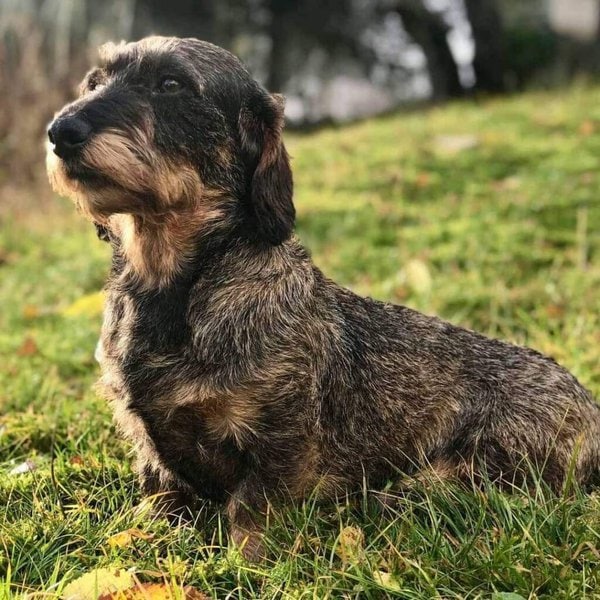
This coat type, on the other hand, is marked by long, curly, and coarse strands. It is determined by the presence of the “wiry” gene. This is a dominant gene that needs only one parent to appear in the doxie.
Despite this, it is not very common in the United States but is the most common doxie coat type found in Germany.
When it comes to maintenance, wiry hair needs a lot more care, as it tends to knot and matt a lot resulting in more frequent shedding when compared to smooth fur.
23. Long-Haired Dachshund
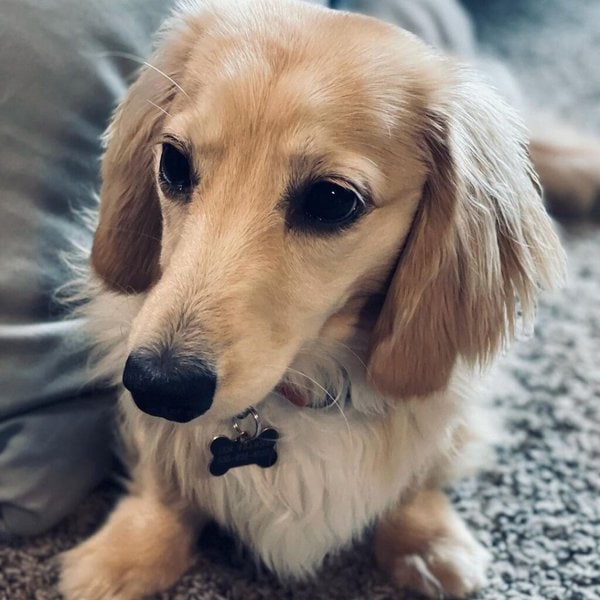
The last of the three different coat types is a long hair dachshund that has distinctly long hair as compared to the other two coat types. The long-haired dachshund is a result of a recessive gene, making it rarer than the traditional smooth coat dachshund.
Due to the long hair, doxies with this coat type seem to shed more than their counterparts. However, this may just be an illusion, and the amount of shedding may be due more to other factors like illness or whether proper grooming is practiced.
With proper grooming, these long hair will appear soft and silky, giving your doxie a majestic look when it is running towards you.
22. Black And Tan Dachshund
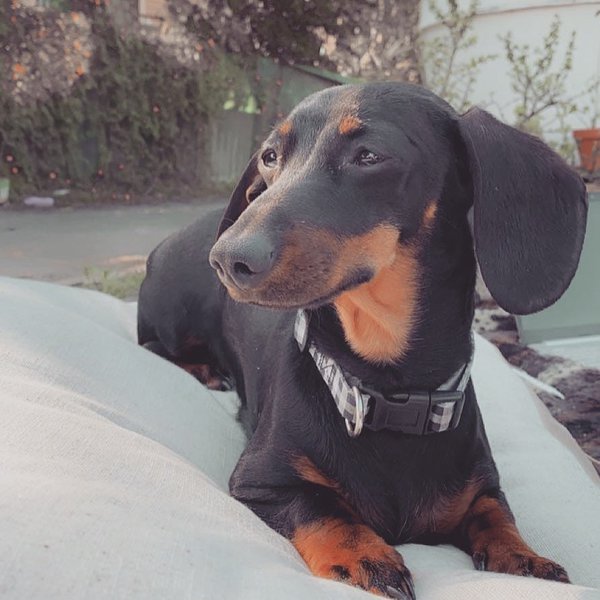
With dachshunds, black usually occurs in combination with the tan color. This is determined by a pair of recessive genes. It occurs mainly with short and smooth-haired doxies.
The distribution of the black and tan is for the most part predictable. The black covers majority of the body including the back, tail, ears, and the top of the head.
The tan appears mainly on the paws, the lower part of the face, and sometimes on the chest. They also often have a distinct pair of tan spots over the eyes.
21. Black And Cream Dachshund
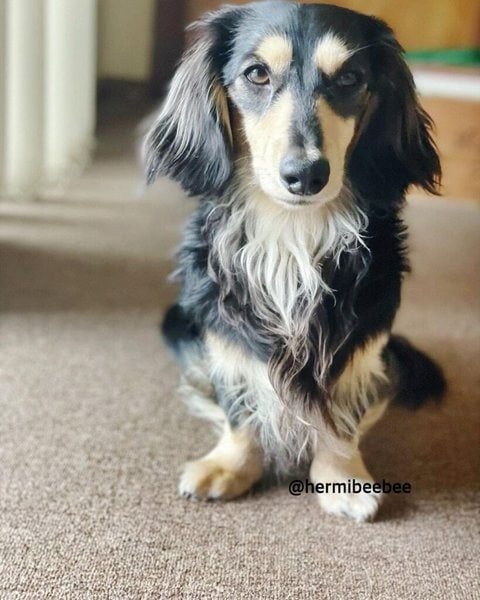
This is easily one of the flashiest of dachshund coat color combinations. It also happens to be incredibly rare.
For the most part, black and cream doxies have smooth coats which are also often long and slightly wavy.
The black fur appears on the back, torso, and top of the head. The cream on the other hand occurs on the paws, most of the face, chest, and part of the ears.
20. Blue And Cream Dachshund
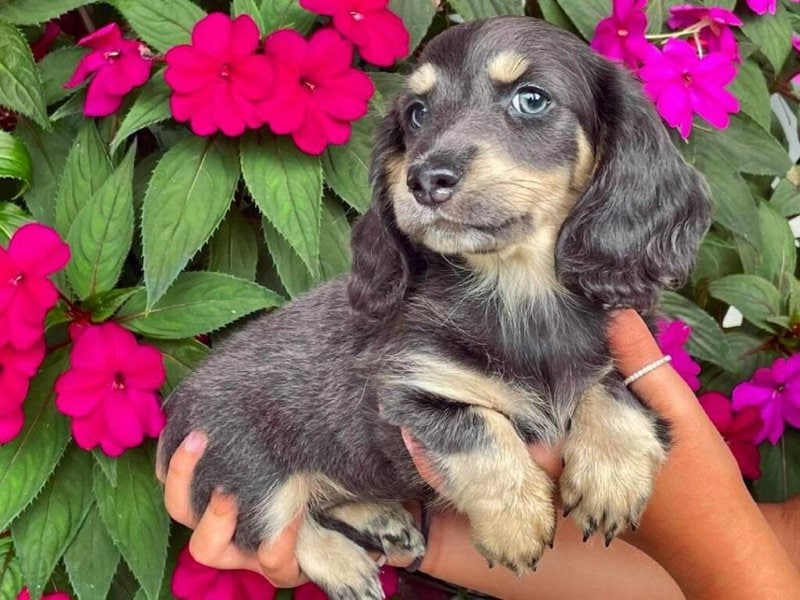
When we say blue here we are not talking about blue in the traditional sense. So you will not find a sky blue doxie.
It is a diluted version of black that appears faded and almost like a metallic bluish-gray hue. It occurs when a specific set of recessive genes dilute the black pigment.
The pattern is like that of most black combinations with the blue fur over most of the torso, tail, and head and a bit of cream on the paws and chest.
19. Blue And Tan Dachshund
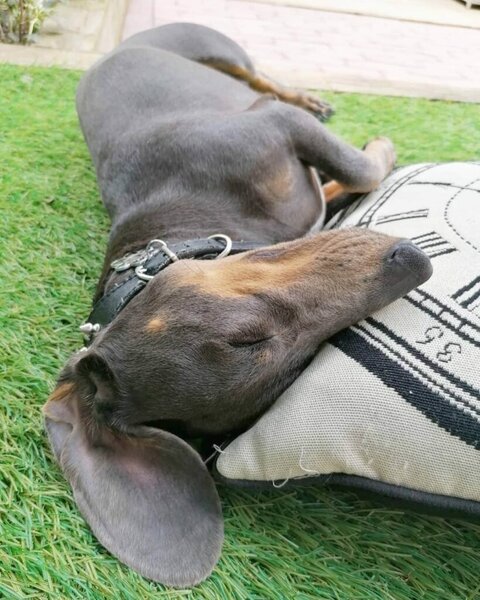
This is another rare combination that makes for very beautiful doggies. The faded bluish-gray fur covers most of the body including the majority of the face and torso.
It may also cross over to the chest but most blue and tan doxies have the tan color on the chest, paws, and parts of the face.
Due to the diluted nature of the blue hue, it is not always easy to tell where the blue ends and the tan starts especially when the doxie is young.
18. Chocolate And Cream Dachshund
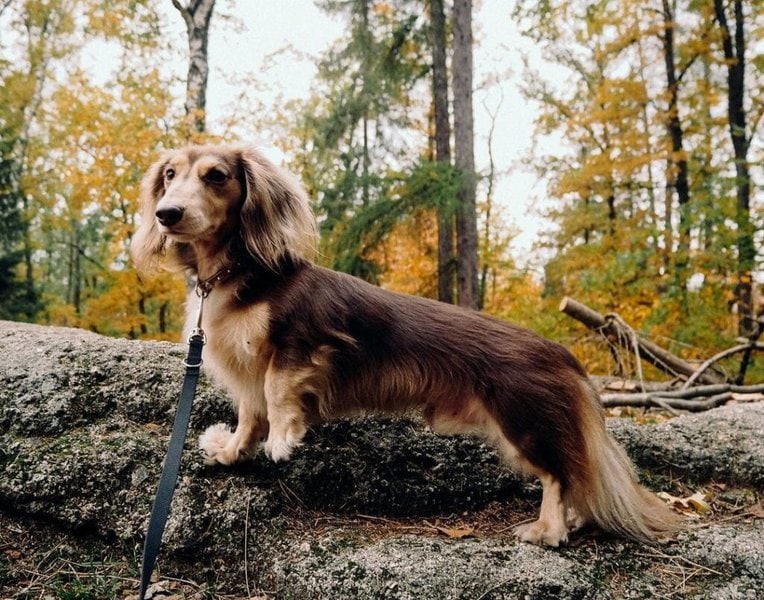
This may not be as flashy as black and cream but it is one of the most adorable color combinations you will get with a dachshund.
As with most other combos, there is a primary color that covers most of the body. In this case that is the chocolate hue that resembles typical dirt, brown color. This covers the back, tail, forehead, and ears on the doxie.
The cream on the other hand ranges from blonde to off-white and appears on the snout, over the eyes, on the paws, and sometimes under the tail.
17. Chocolate And Tan Dachshund
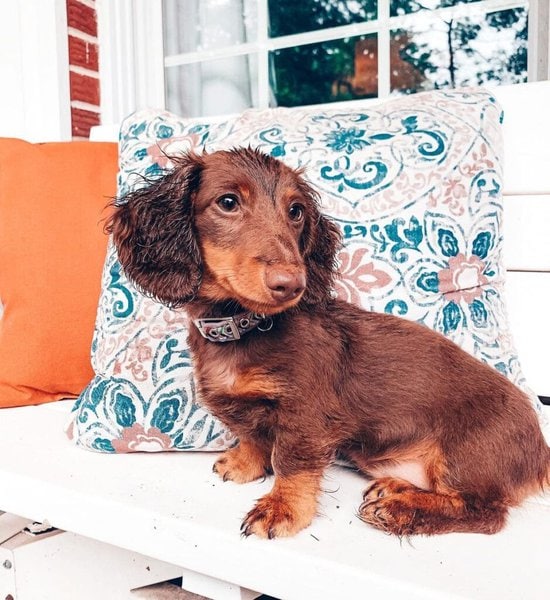
Chocolate and tan doxies have a very unique charm to them.
There is something quite aesthetically pleasing about the super subtle contrast between the two shades of brown on the doggy. In this case, the chocolate hue is the dominant color appearing over most of the dog’s body.
The tan foci on the other hand can be found on the feet, under the ears, and on the chest. They also usually have the signature pair of tan spots over the eyes.
16. Cream Dachshund
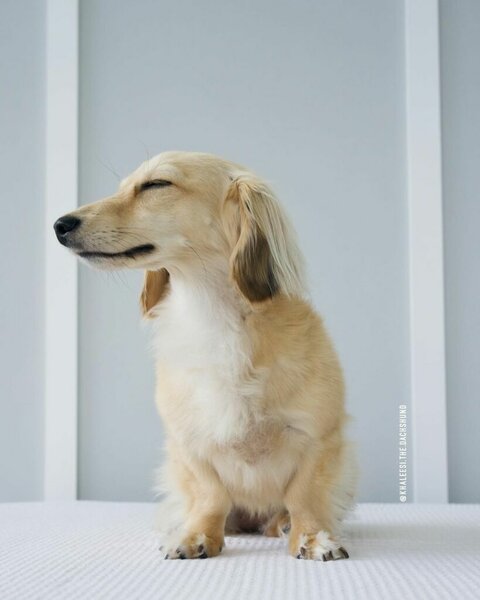
Blondie doxies are easily among the most popular dachshund varieties when it comes to coat colors. The combination of their beautiful blonde fur and the weenie body makes them among the most adorable dogs in general, not just in the dachshund family.
The group features cream or blonde fur all over the body. The group includes English creams with the chinchilla gene and EE creams with the ee-red genes.
Differences here can be identified in terms of the color of the whiskers and nails as well as the presence or absence of shading at the tip of fur strands.
15. Fawn (Isabella/Lilac) And Cream Dachshund
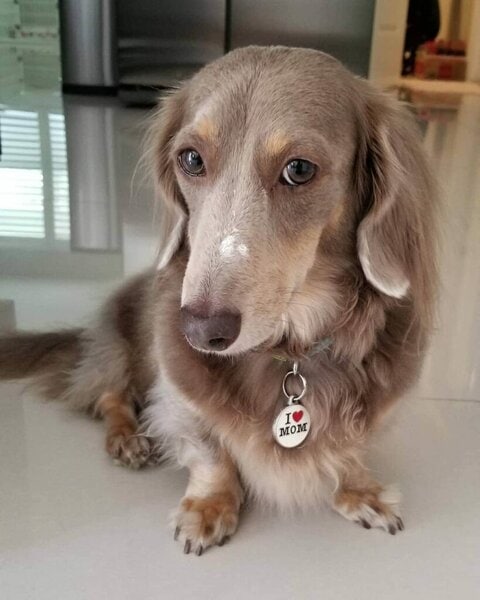
Isabella, or lilac, as well as fawn, is also a type of diluted coat color which occurs as a result of recessive genes diluting brown pigments in the dog.
The resulting fur color is a hazy and diluted brown which should not be confused for the more solid complementary tan hue.
In addition to diluted brown fur, the paw pads, nails, and nose on fawn doxies are brown. With this combination, the face, ears, and feet are cream in color.
14. Fawn (Isabella/Lilac) And Tan Dachshund
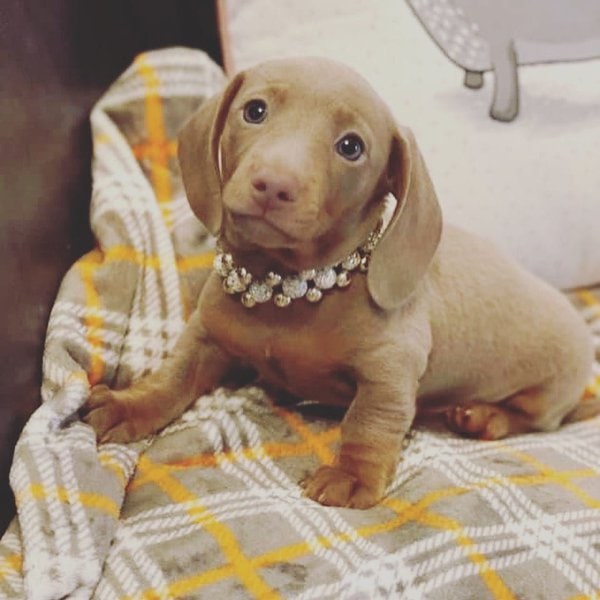
This is a very confusing coat color combination to pick out on dachshunds. This is because the diluted fawn can appear quite similar to dark tan hues.
The best way to describe the difference is in the solidness of the colors.
Fawn is hazy and appears pale while still being dark. The tan spots on the other hand are more solid and deeply pigmented.
The distribution is more or less the same as the other color combinations with fawn over most of the body and tan on the feet, face, and chest.
13. Red Dachshund
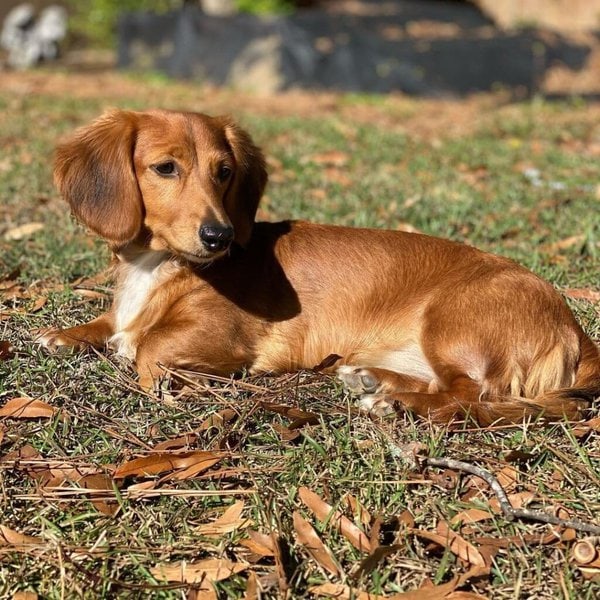
This is the most common coat color on dachshund dogs. This is mainly because of the dominant pattern of inheriting the red color genes. This means that only one copy of the gene is needed for the color to manifest.
The red appears more like a rusty brown than the actual typical red. These dogs usually have black noses and paw pads. The coat type in general varies greatly with red occurring in all 3 types.
12. Wheaton Dachshund
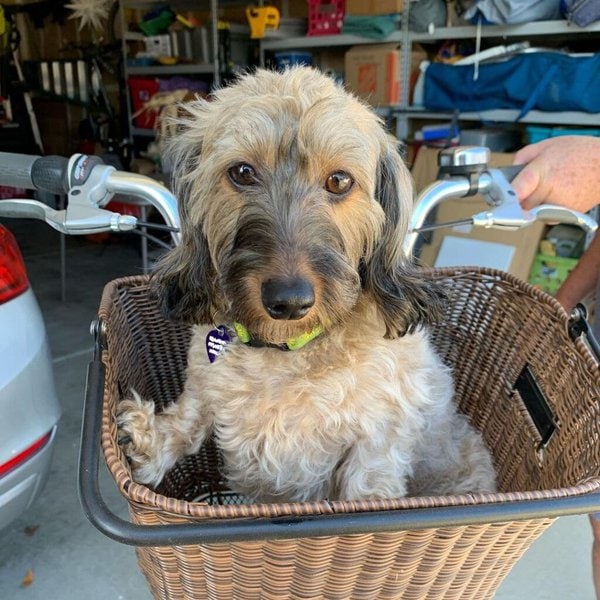
This is one of the rarest coat colors on a dachshund. The color falls somewhere between a light golden brown and whitish hues.
For a long time, this color could only be found on wiry-haired sausage doggies.
However, due to interbreeding between coat types, it is not entirely unheard of to find Wheaton doxies with short or long smooth fur.
Something to take into consideration here is that they often have high care demands with the light color and often coarse coat.
11. Wild Boar Dachshund
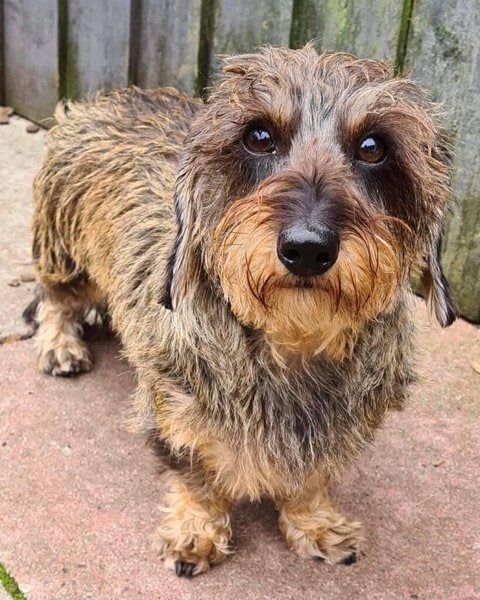
This coat color type is pretty similar to the animal for which it is named and occurs almost exclusively on wiry haired dachshunds. It is a pretty unique combination featuring multiple colors at the same time.
For the most part, the doggie will have a dark coat that could either be black or chocolate with tan spots on parts like the snout and chest.
These are then covered by strands of gold highlights all over the body for a very unique and visually appealing aesthetic that is ideal if you want a unique doxie.
The Wild Boar pattern in dachshund only goes with the wire hair coat type.
10. Black Dachshund (Non-standard)
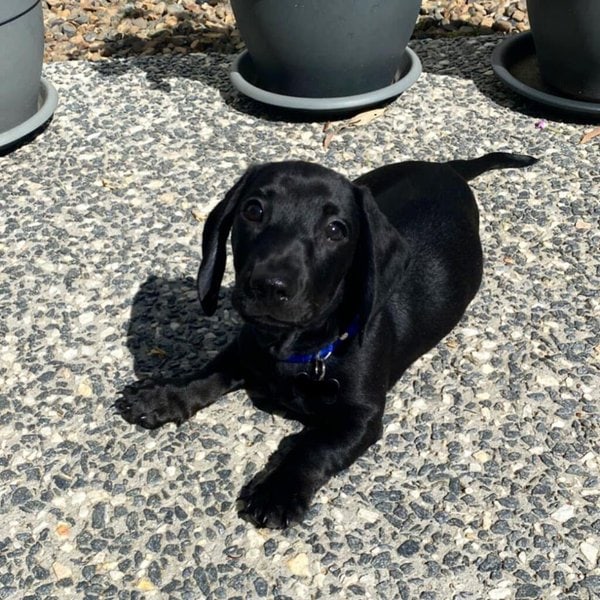
Pure black dachshunds are the rarest of all doxies when it comes to coat colors. This is due to the presence of a rare recessive gene.
In fact, to get a true, solid black doxie you have to mate two parents with the same trait.
According to the American Kennel Club, a doxie only qualifies as a true black type if there are absolutely no tan markings anywhere on their body.
9. Chocolate Dachshund (Non-standard)

This is another very rare solid dachshund color. It appears as a really dark and highly pigmented shade of brown with absolutely no tan or cream spots anywhere on the body.
It is a recessive color trait, meaning that both parents either need to be all chocolate or carriers of the required genes.
The chocolate coat color on doxies mainly occurs with short and smooth-haired doxies but can occur in any of the other two coat colors as well.
8. Fawn Dachshund (Non-standard)
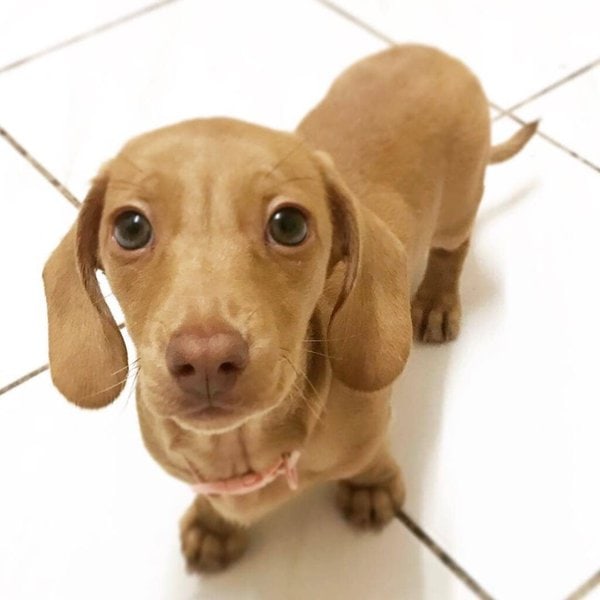
Fawn is a type of diluted coat color on doxies. Dilution means that there are genes present that reduce the intensity of specific coat colors.
With fawn, the color in question is brown. The resulting coat appears as a faded form of the original color.
Also known as Isabella or Lilac dachshunds, these furry little buddies tend to have grayish-brown eyes, whiskers, nails, and paw pads.
It is also important for a doxie to be considered fawn that there are no tan or cream spots.
7. Albino Dachshund (Non-standard)
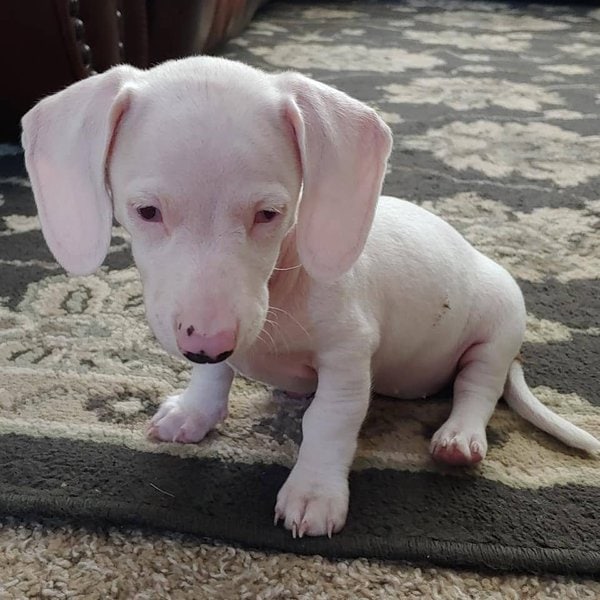
This coat color on doxies is often confused for other light hues like white, Wheaton, and cream. All these, though light, are pigments.
Albinism on the other hand is due to the complete absence of pigmentation. They appear uniformly pale white in terms of coat color.
The paw pads appear pink and the eyes maybe blue. This coat type is associated with several health issues including the risk of sunburns as well as skin cancer.
6. Brindle Dachshund
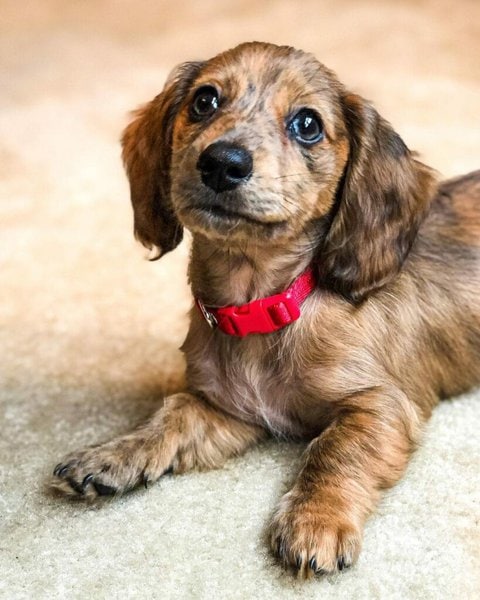
Brindle Dachshunds are commonly referred to as tiger doxies due to the presence of stripe markings on their coat.
This appears as a result of the expression of the dominant brindle gene. This means that only one copy is required making them relatively common.
The pattern features a lighter base coat that may be tan, red, or cream. The stripes on the other hand are darker and maybe black or chocolate allowing them to stand out.
5. Dapple Dachshund
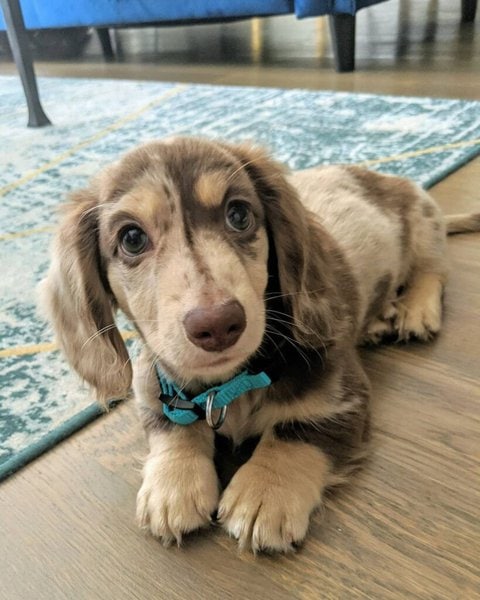
This is one of the most common coat markings there is and is a result of the merle gene. This causes spots of one color to appear on a coat of another color.
The spots vary in size from large foci to numerous specks. The distribution is also usually random and maybe throughout the whole body or on some parts.
The merle gene is also associated with health problems the most notable being eye problems like progressive blindness and cataracts as well as congenital deafness.
4. Sable Dachshund
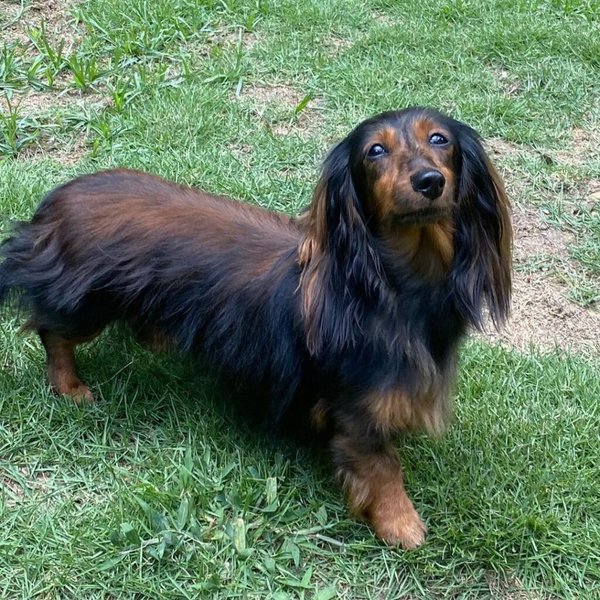
The sable coat type is one of the most difficult to pick out at any stage of the dachshund’s life. This is because first off, the markings appear all over the body.
They also appear on the shaft and ends of the fur as opposed to localized markings from the root of the hair. The shaft and ends appear darker which may give the illusion that the dog has a darker hue.
However, the root maintains the true coat color which more often than not is a solid red.
3. Piebald Dachshund (Non-standard)
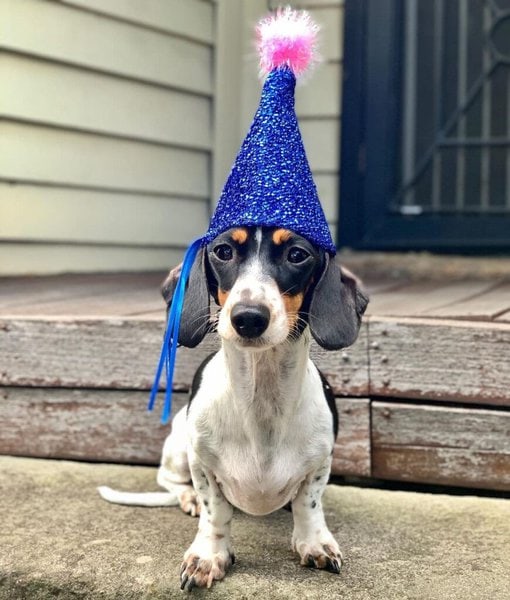
This one is due to the piebald gene. The gene is recessive, meaning that you need two piebalds or carriers of the variation to produce one.
It occurs mainly on short and long, smooth-haired dachshunds with cream or white fur as the base coat color. Darker spots of colors, such as black, brown, and tan, appear randomly all over the body.
There are different types of piebald based on the degree of the body that is left uncovered by the darker spots.
2. Brindle Piebald (Non-standard)
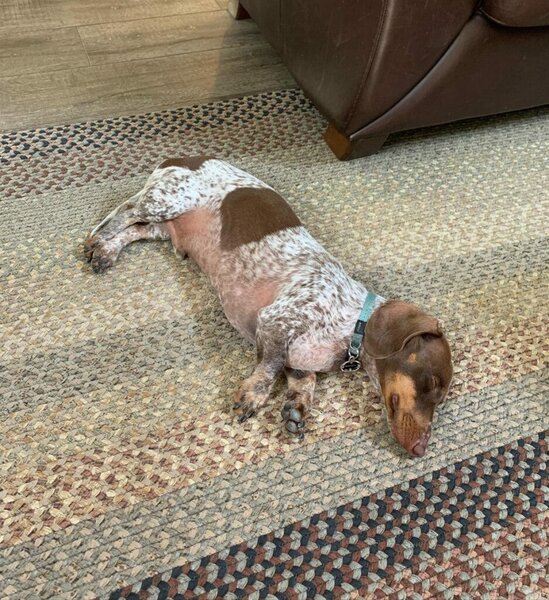
This is a combination pattern where doxies have both the brindle and the piebald gene. It occurs when a brindle and piebald are bred with each other, which rarely happens to make the non-standard option very rare.
As a result, the doggy gets both the piebald markings and brindle stripes on the white coat. Of note is that the stripes are not as long and well defined as in a typical brindle dachshund.
1. Double Dapple Dachshund (Non-standard)
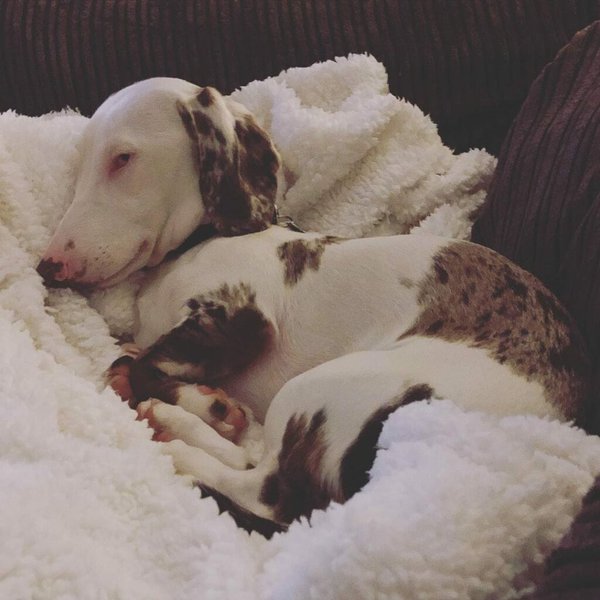
Finally, we have the double dapple dachshund. This is one of the rarest varieties, and for a good reason. This is because of the serious health issues associated with the doggies, including deformed or missing eyes as well as congenital deafness.
It is such a major issue that breeding two dapples to produce a double dapple is prohibited by most breed standardizing groups all over the world.
In terms of appearance, the double merle gene results in white markings all over the body but mainly around the neck, paws, tail, and nose.
Related Questions
What Are The Different Sizes Of Dachshunds? Doxies come in different sizes with the standard being the 16 to 30 lbs and 4 to 8-inch doggies. However, they can be smaller with options like the Miniature doxie, Tweenie, and the Kamancheh or Rabbit Dachshund. These small varieties are bred for aesthetics by mating between the smallest pups in standard doxie litters.
What’s The Difference Between A Sausage Dog And A Dachshund? There is no difference between the sausage dog and a dachshund. Dachshund is the official name of the breed. The terms sausage dog and weenie are simply nicknames based on the dog’s unique build. The birth of such a cute nickname is due to the long torso and disproportionately short legs, giving it the silhouette of sausage on 4 legs.
Do Dachshund Puppies Change Color? Technically, the color on a Dachshund’s coat never changes. This is because it is genetically predetermined. However, the intensity may change from childhood to adulthood. This may be misunderstood as changing color. Effects of graying also make it seem like the dachshund has changed color which is not the case.

